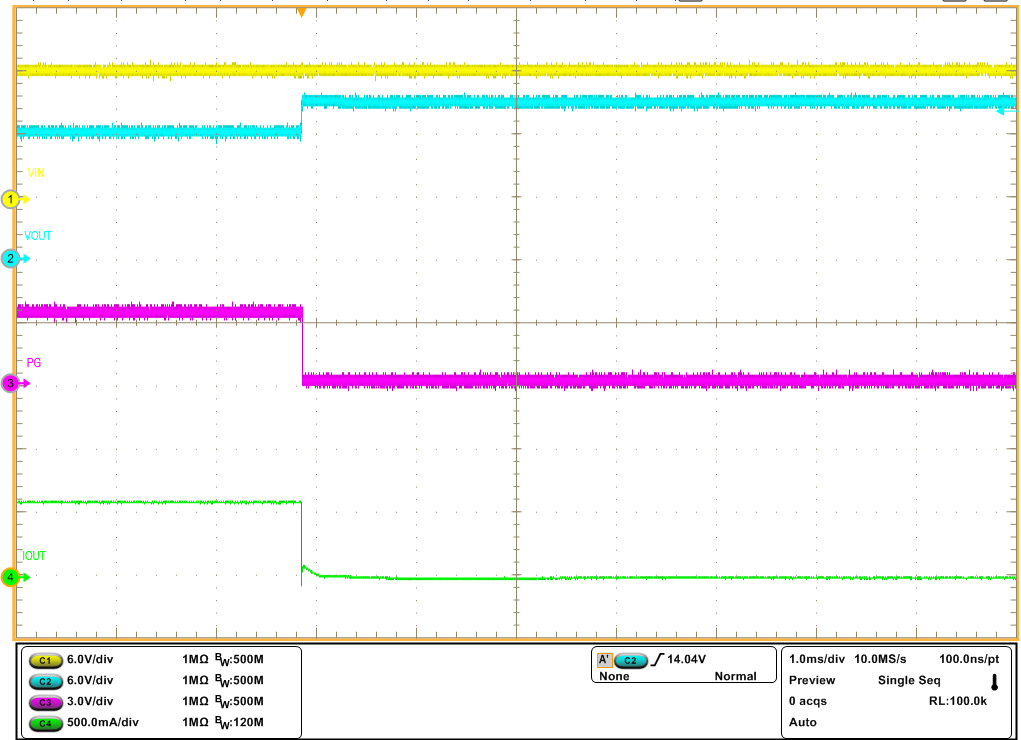SNOU173A October 2020 – December 2020 LM7310
5.3 Reverse Current Blocking Test
Use the following instructions to perform reverse current blocking test:
- Set the input supply voltage VIN to 12 V and current limit of 10 A. Turn ON the power supply.
- Use a second power supply to apply 20V at the OUT with respect to GND.
- Observe the PG signal and input current using an oscilloscope. The device turns OFF immediately allowing zero reverse current and deasserts the PG signal.
Figure 5-4 shows test waveform of reverse current blocking on theLM73100EVM Ideal Diode Evaluation Board.
 Figure 5-4 Reverse Current Blocking Response of LM73100 Device (VIN = 12 V, VOUT = 20 V)
Figure 5-4 Reverse Current Blocking Response of LM73100 Device (VIN = 12 V, VOUT = 20 V)